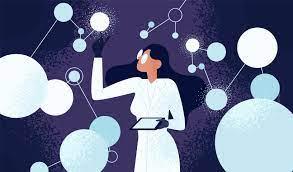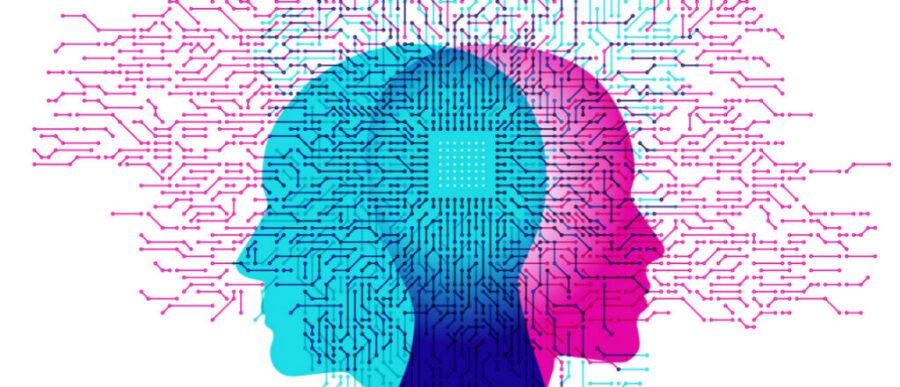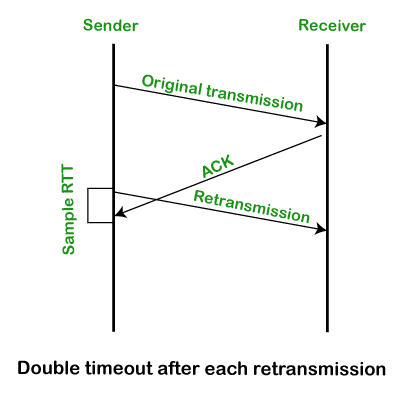K 's Key Ideas from Algorithms to Live By
by Brian Christian, Tom Griffiths
Ideas, facts & insights covering these topics:
29 ideas
·68.5K reads
196
2
Explore the World's Best Ideas
Join today and uncover 100+ curated journeys from 50+ topics. Unlock access to our mobile app with extensive features.
The Computer Science of Human Decisions
Algorithms to Live By offers shortcuts and hacks to help streamline your life. Algorithms are inserted into computers and other forms of technology to solve problems. However, there is no reason that we cannot use algorithms in our everyday lives. Brian Christian and Tom Griffiths describe how algorithms have been used for centuries. Plus, how we use specific algorithms daily. However, some algorithms are more efficient than others. This book provides an outline of the algorithms that can help make your life easier and more enjoyable.
759
6K reads
Unless we’re willing to spend eons striving for perfection every time we encounter a hitch, hard problems demand that instead of spinning our tires we imagine easier versions and tackle those first. When applied correctly, this is not just wishful thinking, not fantasy or idle daydreaming. It’s one of our best ways of making progress.
– BRIAN CHRISTIAN
782
5.88K reads
Some of the biggest challenges faced by computers and human minds alike: how to manage finite space, finite time, limited attention, unknown unknowns, incomplete information, and an unforeseeable future; how to do so with grace and confidence; and how to do so in a community with others who are all simultaneously trying to do the same.
– BRIAN CHRISTIAN
781
4.99K reads
Algorithms Do Not Just Apply to Computers
Most people associate algorithms with computers and other forms of technology. However, the word actually dates back to the ninth century. The Persian mathematician, Muhammad Al-Khwarizmi, is the first person to use the word ‘algorithm.’ However, the use of concepts like algorithms dates back to the Sumerians. The Sumerians were a civilization that existed four thousand years ago. This civilization used a finite number of steps to solve problems. We use a finite number of steps to complete multiple tasks each day. Importantly, this is also the technique at the heart of algorithms.
746
3.7K reads
As long as a set of finite steps are followed, then anything can be an algorithm. For example, a recipe is a type of algorithm. It involves a series of instructions to obtain the desired result. Writing up a list of pros and cons for doing something is an Intuitive Algorithm.
We might consider these algorithms as more subjective than computer algorithms. Still, these algorithms use the same process and reach the same solution. In both instances, when certain conditions are met, the next step is made in the process.
737
3.12K reads
Algorithms Can Tell Us When to Stop
As well as telling us how to conduct a task step-by-step, algorithms can tell us when to stop doing a task. As humans, we struggle to know when to stop searching for something. Additionally, we have cognitive biases that impact our choices when searching.
732
3.05K reads
The authors of this book suggest that the Optimal Stopping Algorithm is the solution to this. If there are 100 options, this algorithm will state that you should look at the first 37 without taking any of them. Use these first 37 as a standard. Subsequently, whichever item meets these standards should be taken. This algorithm will not guarantee the best result. However, it will mean you have a much higher chance of acquiring an item significantly better than just guessing. It does not matter what you are searching for: 37% of the total is where you draw your standard.
771
2.78K reads
Algorithms Can Tell Us When to Start
As well as advising us on when we should stop searching, algorithms can also tell us when to explore something new. In the book, the authors give the example of a slot machine. Some people will just sit at the machine until they win. However, there is always a thought in people’s minds whether they should simply walk away despite losing lots of money. Based on the alternative name for slot machines, this dilemma is called the Multi-Armed Bandit Problem.
732
2.48K reads
Here are the steps to this algorithm, applied to gambling machines:
- Find a machine that offers the best expected value. In this case, it is the machine with the biggest jackpot as you are unaware of probabilities.
- While playing, make sure that you keep track of the real outcome (how much money you’re winning). The real outcome should be compared with how much you were expecting to win by this point.
- If the real outcome is consistently lower than your expected outcome, you should move on to another machine. This machine should be the one with the second-biggest jackpot.
- Repeat the process.
762
2.34K reads
Algorithms Can Help Us Organize Our Work
The authors of this book explain that organized chaos can be fine. As long as you know where everything is, you will be productive. However, if your filing system is not efficiently organized, there are algorithms to improve your organization.
725
2.18K reads
The authors describe three algorithms, specifically:
- Bubble Sort
This algorithm is the least efficient. With this method, you organize one pair at a time. Then, you repeat this process over and over until everything is sorted. The authors give an example of the bubble sorting algorithm for alphabetizing books. With a disorganized shelf, you would start with the letter A. You would compare the first two books and sort these two alphabetically. Then, you compare the item that is now the second book with the third book. This process is repeated until you have reached the end of the collection.
731
2.1K reads
2. Insertion Sort
The insertion sort method is far more efficient if you have to sort a substantial amount of items. If you consider the book analogy again, the insertion sort method would involve taking all the books off the shelf. Then, placing them back one-by-one, ensuring that the books are placed in the correct order each time you place a book.
732
2.01K reads
3. Merge Sort
Finally, the merge sort method involves dividing everything into multiple piles. Each pile should be sorted from A to Z. Then, these piles should be merged.
724
2K reads
3. Merge Sort
Finally, the merge sort method involves dividing everything into multiple piles. Each pile should be sorted from A to Z. Then, these piles should be merged.
721
1.92K reads
Thrashing is a very recognizable human state. If you’ve ever had a moment where you wanted to stop doing everything just to have the chance to write down everything you were supposed to be doing, but couldn’t spare the time, you’ve thrashed.
– BRIAN CHRISTIAN
740
2.78K reads
Algorithms Can Help Us Schedule Our Lives
Scheduling our lives can be highly complex and is often a daily challenge. As well as work demands, multiple other life demands make fitting everything difficult. However, some algorithms can help improve how you schedule your life.
- The Earliest Due Date Algorithm – A straightforward algorithm. The 1st task you complete is the one with the nearest deadline.
- Moore’s Algorithm – It recommends skipping the task that requires the most time. Instead, you should work toward finishing more tasks overall. This algorithm is more effective when you do not have enough time to complete every task.
760
1.73K reads
If you want to be a good intuitive Bayesian—if you want to naturally make good predictions, without having to think about what kind of prediction rule is appropriate—you need to protect your priors. Counterintuitively, that might mean turning off the news.
– BRIAN CHRISTIAN
733
1.99K reads
Algorithms Can Help You Predict the Future
Predicting probable outcomes is viable when using the correct algorithms.
Predicting probable outcomes based on algorithms dates back to 18th century England. Reverend Thomas Bayes developed a simple way of predicting future outcomes. The authors of this book apply Bayes’ theorem to lottery scratch tickets. It recommends people who buy scratch tickets consider the prevalence of winning tickets in circulation. With this as an assumption, it is possible to calculate the probability of your tickets’ specific results.
724
1.5K reads
As with many things, the more information you have, the more precise you will be. One method that utilizes vast amounts of information to predict future outcomes is the phenomenon’s distribution pattern. Other names for this distribution are the normal distribution or bell curve. If something is normally distributed, you can assume it will be characterized by features in the middle rather than extremes when you encounter it.
722
1.42K reads
Algorithms Prevent Data Overload
Data overload is often considered in relation to a classic thought experiment. In this thought experiment, two generals are preparing to launch a joint attack on a city. This city is located in a fortified valley. These generals are on the two hills either side of the valley. So, the only way they can simultaneously attack is by agreeing on an exact time. On top of this, they can only communicate by sending individuals through the valley where their enemies lie. This thought experiment was used by computer scientists as a way of determining algorithms for safe message transmission.
717
1.34K reads
Method I – Retransmitted Till Breakdown
This was the first method created. This solution involved sending multiple messengers with the hope that one would slip through undetected. However, sending too many messengers can lead to an overload. With regard to computers, this would be a server overload.
718
1.43K reads
Method II – Exponential Backoff
If a server overload is created, then exponential back-off is a method that should work. Instead of frantically hitting refresh, you could wait a few minutes for the traffic to ease. The exponential part relates to how long you wait between refreshes. The authors suggest waiting twice as long each time you are given an error message when refreshing.
720
1.32K reads
Method III – Additive Increase, Multiplicative Decrease
This one hopes to prevent the overload from happening. It determines the max. amount of data a network can handle. It starts by only sending one package of data. Then, if this is fine, it sends double the amount. It continues this process until it reaches the point of overload.
This can be applied to your everyday life. Too much info. can lead to your brain overloading.
∴ you should start by introducing small amounts of information and test how far you can go before your brain is overloaded. Once you know the limit, you'll have a better understanding of when you should stop working on a task.
737
1.19K reads
Even the best strategy sometimes yields bad results—which is why computer scientists take care to distinguish between “process” and “outcome.” If you followed the best possible process, then you’ve done all you can, and you shouldn’t blame yourself if things didn’t go your way.
– BRIAN CHRISTIAN
750
1.27K reads
Algorithms Do Have Their Limits
Complicated scenarios often require complex algorithms to fully understand what is happening. However, algorithms are limited in the complexity with which they can be applied. The issue is that, when predicting something complex, you will be tempted to add variables until the algorithm can fully explain your data. This includes explaining the errors in the data. However, doing this is problematic as it leads to something called over-fitting. You have made the model highly complicated and specific to the data you are using. Hence, it cannot be applied flexibly to other data.
728
1.16K reads
The greater the uncertainty, the bigger the gap between what you can measure and what matters, the more you should watch out for overfitting – that is, the more you should prefer simplicity.
– TOM GRIFFITHS
737
1.26K reads
Concluding Points
Algorithms let us go for ‘good enough’ rather than always striving for perfection. If we consistently use algorithms in our lives, we will benefit greatly and can start to relax more. Our brains are built like computers. Therefore, like computers, we should start complementing them with algorithms.
724
1.3K reads
IDEAS CURATED BY
CURATOR'S NOTE
Compelling and entertaining, Algorithms to Live By is packed with practical advice about how to use time, space, and effort more efficiently. And it's a fascinating exploration of the workings of computer science and the human mind
“
Curious about different takes? Check out our Algorithms to Live By Summary book page to explore multiple unique summaries written by Deepstash users.
K 's ideas are part of this journey:
Learn more about computerscience with this collection
How to practice effectively
The importance of consistency
How to immerse yourself in the language
Related collections
Different Perspectives Curated by Others from Algorithms to Live By
Curious about different takes? Check out our book page to explore multiple unique summaries written by Deepstash curators:
1 idea
Sushil Bishnoi's Key Ideas from Algorithms to Live By
Brian Christian
11 ideas
Leilani 's Key Ideas from Algorithms to Live By
Brian Christian, Tom Griffiths
Discover Key Ideas from Books on Similar Topics
8 ideas
Hackers & Painters
Paul Graham
7 ideas
Minds and Computers
Matt Carter
14 ideas
Human-Centered AI
Ben Shneiderman
Read & Learn
20x Faster
without
deepstash
with
deepstash
with
deepstash
Personalized microlearning
—
100+ Learning Journeys
—
Access to 200,000+ ideas
—
Access to the mobile app
—
Unlimited idea saving
—
—
Unlimited history
—
—
Unlimited listening to ideas
—
—
Downloading & offline access
—
—
Supercharge your mind with one idea per day
Enter your email and spend 1 minute every day to learn something new.
I agree to receive email updates










